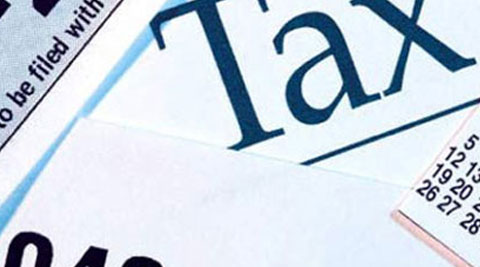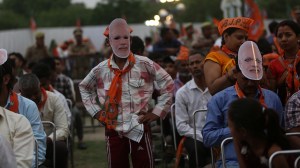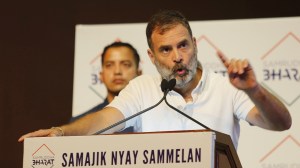- India
- International
No more bandaid tax policy
The effective corporate tax rate in India is identical to the stated 30 per cent rate. This has killed corporations and the economy.
 Perhaps we should call it the Sen (Amartya)-NAC-Piketty policy of taxation.
Perhaps we should call it the Sen (Amartya)-NAC-Piketty policy of taxation.
There can be many positive side-effects of the Narendra Modi-BJP mandate. The electorate has provided the BJP with a free hand in charting India’s economic and social policies. Some of the structural changes demanded by the electorate will require deft manoeuvring between the Centre and states, or between Lok Sabha and Rajya Sabha. However, the forthcoming budget, that is, the maiden tax and expenditure policy document, is per se only constrained by the imagination, thinking and boldness of PM Modi and Finance Minister Arun Jaitley. They have only two choices in formulating the budget. Either they continue with a little bit of tinkerisation here and a little bit of bandaid there. This is the policy followed by every government of India budget, with only one exception (February 1997) since the breakthrough 1991 budget. Or they decide to chart an intelligent new course in formulating tax and expenditure policies.
Let us start with some no-brainers. Given the state of the economy, tax increases are ruled out; equally, rationalising of expenditures are ruled in so that the net result is that India embarks on a structural fiscal reduction path, a programme that gets India to a Central fiscal deficit of 3 per cent of GDP and a consolidated Centre plus state deficit of around 5.5 per cent of GDP. This will entail a reduction of around 2.5 to 3 per cent of GDP from the present obscene levels. This and the next article will discuss how corporate and personal income taxes can be restructured according to non-bandaid thinking.
Around the Western world, there is heightened concern about rich fat cats increasing their incomes at the expense of everyone else. There was the 99 per cent Wall Street movement and now there is economist Thomas Piketty’s recommendation that there be a super fat cats tax. The jury is still out on increasing tax rates for wealthy individuals and rich corporations in the West. In India, the tax-the-rich recommendation has preceded Piketty by at least five years. Perhaps we should call it the Sen (Amartya)-NAC-Piketty policy of taxation.
In India, corporations are already taxed at the highest effective rate in the world. (An effective tax is simply the ratio of tax paid to income earned. The difference between the stated nominal and the actual effective arises because of legal tax deductions.) And this sock-it-to-the-rich fat cats policy has had predictable effects. High and onerous tax rates have slimmed the Indian corporate sector so much that they are too starved to produce any additional output. Industrial output in India has not increased by even one widget over the last three years. The 2014-15 Indian effective tax rate of 29 per cent is a full 11 percentage points higher than most of our East Asian competitors, and 15 to 20 percentage points higher than competitors in Germany and Sweden.
The objective of corporate taxation should be threefold — simplicity, fairness and broadly revenue-maximising. Regarding simplicity, there is considerable improvement that can be made. First, there should be only one tax rate, rather than the plethora of corporate tax payments involved (on income, dividends, surcharge and education). This tax rate should be reduced to 21 per cent (see table). Second, there should be only one corporate tax exemption (accelerated depreciation). This simple tax code can help industrial growth to be in the range of 5-10 per cent per year rather than the range of -3 to 3 per cent for the last three years. The extra growth and extra compliance can easily recover the lost tax revenue in just two years.

In sharp contrast, the UPA policy towards budget-making was broadly as follows. Decide on welfare expenditures as decided by the NAC and the high command. Financial markets and ratings agencies decide the fiscal deficit level at the Centre. Bureaucrats in the ministry of finance then decide how much to tax. But they are constrained by one obstacle — they cannot change tax rates. So they work overtime to cook the budget — retrospective tax legislation, education cess and surcharges. A parallel army of ideological economists then find supporting documents as to why the tax rate should actually be substantially higher. Franz Kafka or Joseph Goebbels anyone?
The UPA-NAC budget math on corporate taxes for 2014-15 is broadly as follows. The corporate tax rate is composed of a basic rate of 30 per cent plus a surcharge of 10 per cent (3 per cent tax) and an education cess of 1 per cent. Estimated corporate tax collections on the basis of the 30 per cent rate are reported to be close to Rs 4,05,000 crore (or Rs 405 tc). Corporate tax deductions (accelerated depreciation and other special deductions, both approximately equal in magnitude) together are estimated to account for about Rs 84 tc. The estimated pre-tax corporate income is therefore Rs 1,526 tc.
But wait — the UPA is not done taxing yet. Apart from the statutory 30 per cent tax rate, there is a tax surcharge of Rs 32.40 tc and an education cess of Rs 13.10 tc. The total tax paid by corporations is therefore Rs 405 tc plus 45.50 tc, or Rs. 450.50 tc. So the give-away to fat corpcats is only (84-45.50) Rs 38.50 tc. In other words, the effective tax rate paid by corporations in India in 2014-15 is the ratio of tax paid (Rs 450.50 tc) to income (Rs 1,526 tc) or 29.5 per cent, that is, by far the highest in the world. Note that the effective tax rate is almost identical to the stated 30 per cent rate, a feat unmatched in the world, and India, possibly ever. That is the UPA’s gift to the economy and socialism.
The table documents effective tax rates in different countries and regions circa 2005-09 (and the most recent budget estimate for India). Note the convergence of effective tax rates at 21 per cent. The exceptionally low corporate tax countries, besides tax-havens, are the East Asian economies at 18 per cent, Canada (14 per cent), Germany (16 per cent) and Sweden (a super low 10 per cent). Most references to Sweden are that it is an ultra-socialist economy but clearly the Swedes know from where, and how, to get money for their welfare programmes. Their motto seems to be to maximise output and then spend on welfare. Contrast that with the old Congress-high command way: maximise welfare payments and then tax the hell out of the “rich” corporations. In other words, you end up with zero industrial growth for three years, no increase in revenues and a bloating fiscal deficit that you try and correct by introducing retrospective taxes. Now we have a genuine explanation for Sonianomics, and why the Congress got only 44 seats in the just concluded parliamentary election.
The writer is chairman of Oxus Investments, an emerging market advisory firm, and a senior advisor to Zyfin, a leading financial information company
EXPRESS OPINION
Apr 25: Latest News
- 01
- 02
- 03
- 04
- 05










































